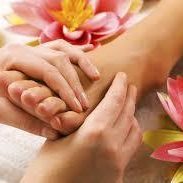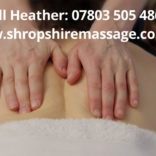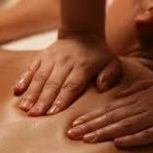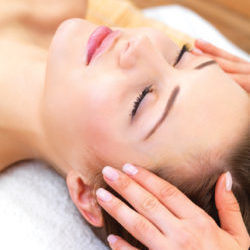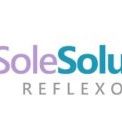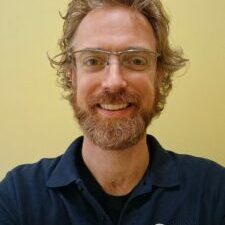What is Sports Massage?
Sports Massage is a special branch of massage focussed on athletes, to help them prepare for their events, reach peak performance and shorten time need to recover from an event or an injury. Although you don’t have to be a sports enthusiast, or even injured to benefit from Sports Massage.
There isn’t a specific type of massage exclusive to sports, but it draws upon a range of other methods – such as, Swedish Massage, deep tissue massage, hydrotherapy and trigger point therapy. The basic purpose of sports massage is to manage, manipulate and if necessary rehabilitate the soft tissues, including the muscles, tendons and tissues etc.
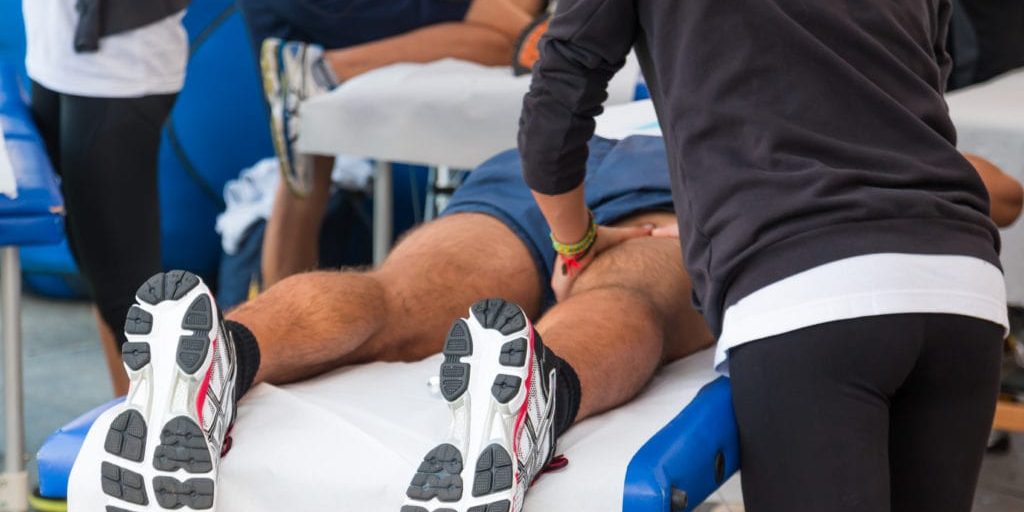
Linked with remedial therapy, sports massage is often styled as Sports & Remedial Massage, because it seeks to address the whole spectrum of sports activity from preparation for an event or exercise, right through to the performance time and immediately afterwards. Sports massage can also be a useful technique to complement other methods such as Physiotherapy, Osteopathic and Chiropractic treatments.
It can also be preventative, because a skilled practitioner can identify muscles which may be overworked and could be damaged by further strain, so the work of a sport massage therapists could also include information and advice on exercise and maintenance.
It is claimed that sports massage, like other massage, can improve circulation and lymphatic flow and stimulate nerves endings, increase muscle tone and lengthen or shorten the length of muscles, as required for optimum efficiency. Sports massage is reputed to give much help scar tissue created by old injuries, which is prevalent in athletes.
Interestingly, the greatest benefit claimed for sports massages is not so much the physical aspect, the psychological one by assisting in mental preparation for a sporting event.
Many professional sports teams - Premier League football, racing teams, tennis, swimming and cycling teams, especially when competing nationally or internationally - keep one or more sport massage specialists on staff as part of the overall support.
Massage is known to reduce heart rate, blood pressure and cortisol levels. Many people report that as a result they have a feeling of deep relaxation, and improved mood and well-being. Athletes may find an edge in these psychological benefits. Particularly if they have after a massage been assured that they are fit to play and in top condition to win.
What to expect from a Sports Massage Session
You would be likely to choose Sports Massage if you regular play sport or if it is your profession or your passion. And it is likely to be on-going, rather than a fix for a short-term condition. Athletes and sports enthusiasts tend to form long-term relationships with their Sports Massage practitioner, so that they can be prepared and supported and helped right through the season of activity. Though, you can still seek the help of a therapist, even if you are not a sporty person.
Case-history taking and a discussion about what you'd like to achieve from the treatment will form part of your first treatment. Wear loose clothes, shorts if you’re going for leg treatment. Mostly you will be treated wearing your underwear with towels to cover and keep warm the parts not being treated.
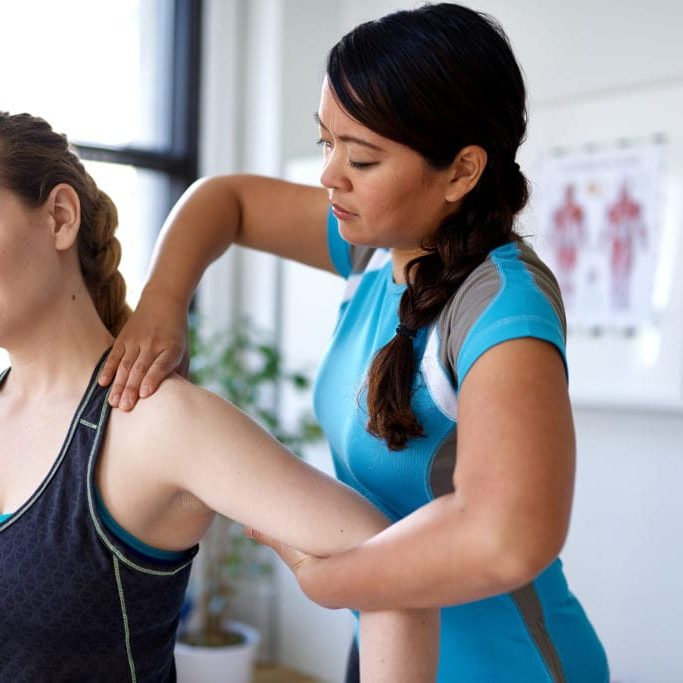
The treatment itself may consist of a number of techniques including general massage, assisted stretching and techniques amalgamated from Swedish Massage, deep tissue massage and others:
- Soft Tissue Release (STR) is a technique used in stretching injured muscles
- Friction – a technique which is used for specific areas of tightness in muscles, it involves breaking down built up scar tissue and separation of muscle fibres. It only lasts a short time, but it can be uncomfortable
- Effleurage and Pettrisage are terms from basic Swedish massage techniques, used to remove knots in the muscles and help reduce inflammation
- Muscle Energy Technique (MET) stretching extremely tight muscles by this technique can help to avoid injury to muscles during performance.
- Positional Release Technique (PRT) – Placing the muscle into a position where there is minimal pain or none at all, encourages it to release its tension.
- Joint Mobilisation helps to reduce pain, re-establishes joint movement and enables a return to full function after an injury.
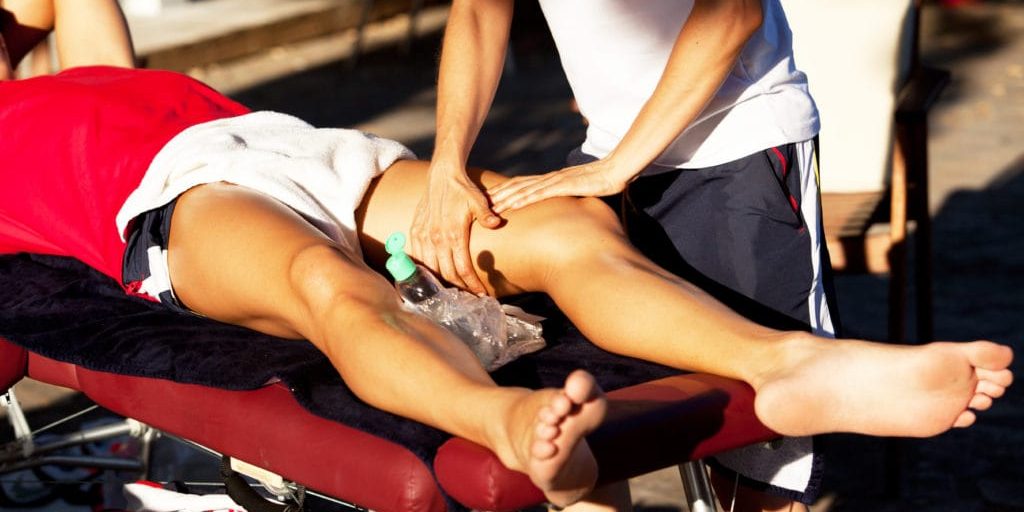
Effects and Benefits of Sports Massage
Whether your work keeps you seated in front of a computer, or you like to do an occasional ‘ball-chasing’ exercise, or whether you are skilled and focussed athlete, you may find benefit from sports massage. Tension can build up in muscles from overuse or from inactivity.
The general benefits offered are:
- Decreasing the stress and tension in your whole system, which helps you to perform better
- Enhancing the immune system
- Increasing flexibility of the muscles and range of movement
- Monitoring the state of your muscles and soft tissue, to avoid future injury
- Reducing the recovery time after activity, so you can train or participate again swiftly
- Increase the speed and effectiveness of rehabilitation after injury.
Those are general benefits that would apply to any active individual, but there may be some particular stresses and strains, specific to your chosen sport. Whether you play golf, tennis, football, cricket, squash, badminton, swim or cycle, there are particular injuries or strains associated with each sport. So an expert qualified sport massage therapist will have experience of your condition.
Some sport massage therapists work on their own, others as part of a team. Besides fixing injuries, a practitioner can give regular massage and advice on muscle condition and can give advice on appropriate exercise and training timetable in conjunction with the rest of the support team.
Before, during and after… are the timings for sports massage, knowing that you start your sport in the very best condition you can be is a great way to raise your esteem and self-confidence. And it’s been found that that confidence can make the difference between an also-ran and top place on the podium.
Professional Bodies & Organisations
The Institute of Sport & Remedial Massage
The ISRM was formed by an amalgamation of the London School of Sports Massage and the North London School of Sports Massage, it is now the governing body for practitioners in the UK. In 1989 when the London School of Sports Massage (LSSM) set up the first externally validated qualification in Sport & Remedial Massage which formed the basis of the training programmes utilized today. ISRM’s main objectives are to ensure the quality of training by uniting independent schools under a single, externally validated Sport & Remedial Massage qualification, and to represent therapists who employ a range of assessment and remedial techniques to effectively treat a variety of soft tissue conditions.
The Sports Massage Association
In January 2002 the Sports Massage Association (SMA) was launched in response to an increasing demand for the service and some confusion about appropriate qualifications. The SMA asserts that it is the leading independent professional body for Sports Massage in the UK, and that it aims to establish and sustain minimum standards for sports massage training organisations. Besides giving information about the therapy to the general and sporting public, the SMA maintains the National Register for Sports Massage Practitioners.
Massage Training Institute (MTI)
The Massage Training Institute is a national examining body and a professional association specialising in holistic massage. Individual massage tutors and schools are its members. The MTI specialises in Holistic Massage training courses. MTI schools offer introductory, practitioner and advanced level courses in massage. While all members abide by the MTI’s core syllabus in terms of content and training length, each school or tutor can have their own style of massage teaching.
General Council for Massage Therapy
The General Council for Massage Therapies (GCMT) is the governing body for massage therapies and all bodyworks and soft tissue techniques in the UK. The GCMT is a non-profit making body initially established by the major professional associations in massage therapies; the associated bodies include:
- The Sports Massage Association (SMA)
- Scottish Massage Therapists Organisation – (SMTO)
- National Association of Massage & Manipulative Therapists – (NAMMT)
- Association of Physical and Natural Therapists – (APNT)
- Association of Holistic Biodynamic Massage Therapists – (AHBMT)
- Aromatherapy and Allied Practitioners’ Association (AAPA)
Fascinating Facts
- Sports massage has probably existed as long as sports have existed. It stands to reason that as soon as you push the boundaries of physical performance, there will be injuries and methods to alleviate them, and explorations into getting the competitive edge in performance. There is evidence of its early use by ancient Egyptian, Chinese and Greek civilisations. And Hippocrates, so-called father of medicine, advocated the benefits of ‘rubbing’ on the human body as early as 460BC. Since the early 1900s, the massages techniques we use today were developed.
- Paavo Johannes Nurmi won five gold medals in the 1924 Olympics held in Paris , and between 1920 to 1928 picked up a total of nine gold and three silver medals in the 12 events in which he competed. ‘The Flying Finn’, as he was known, sustained his share of injuries, but attributed his outstanding success to sports massage during training. He said little about it, or any subject, and as a man of few words, was called ‘The Great Silent One’.
- DOMS, the dreaded ‘Delayed Onset Muscle Soreness’, experienced by many athletes and anyone after a session of vigorous activity, has been showed to decrease by some 30% after sports massage.
- Plantar fasciitis is a very common sports injury; about 1 in 10 people will get plantar fasciitis at some time in their life. Usually there is one painful spot on the underside of the foot, often about 4 cm forward from the heel. It can occur at any age, but is most common in people between 40 to 60 years old. It is twice as common in women as men, and very common in athletes.
- The perceived fatigue and subsequent recovery has been shown by research studies to be significantly affected by sports massage. Subjects who had undertaken energetic exercise, reported that felt they were less fatigued and felt like they recovered faster after sports massage. Anxiety was noted to have decreased and improved mood and well-being were also noted.
- Triathlon comprises three sporting activities: running, cycling and swimming; that could create three types of injury. During triathlon training and racing, common injuries that can occur include: swimmers shoulder, lower back pain, illiotibial band syndrome (runners knee), hamstring strains, Achilles tendinitis, shin splints, and plantar fasciitis. One triathlete, who is also a qualified sports massage therapist, claims to have accumulated considerable successful experience in the training and treatment of triathlon competitors through sport massage.
- Tennis elbow is just for tennis players. Lateral epicondylitis, the technical name for Tennis Elbow, is inflammation of the outer forearm and elbow where the tendons attach to the bone, and can affect anyone who is in their job their hobby or their favourite sport making repetitive movements, and gripping for a long period of time. For instance: playing a musical instrument, length DIY activities like hammering using a screw driver, weight lifting, digging in the garden or lifting weights in the gym. Sports massage developed to alleviate problems incurred in sports can also help with the strains of many other everyday activities, besides poor backhand technique.
- Jack Meagher, is credited with coining the term “sportsmassage,” and was a pioneer in the field. His book Sportsmassage (Doubleday and Station Hill Press, 1985) introduced the principles of sports massage both to general massage therapists and athletes. His other passion was horses (he worked with the Olympic team in 1976) and two of his other classic volumes, still referred to today, are “Beating Muscle Injuries for Horses” and “Beating Muscle Injuries for Runners.”


